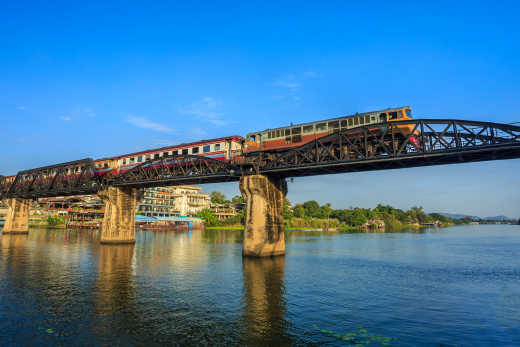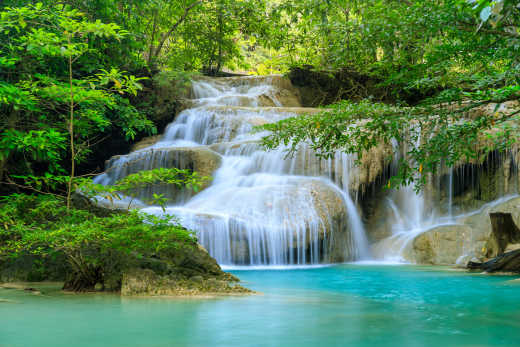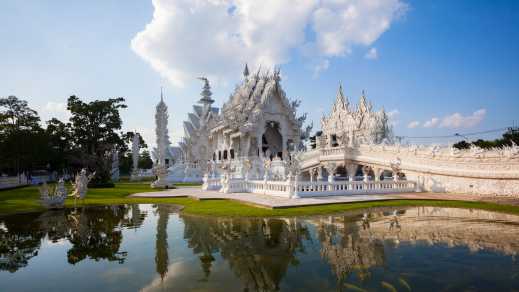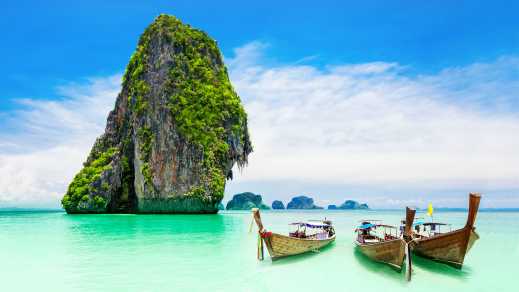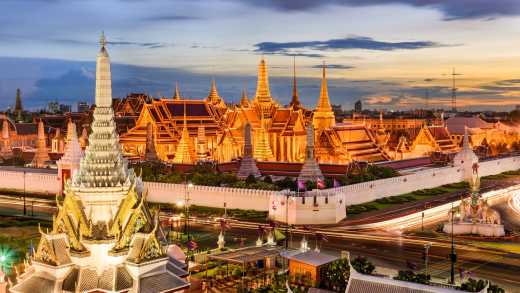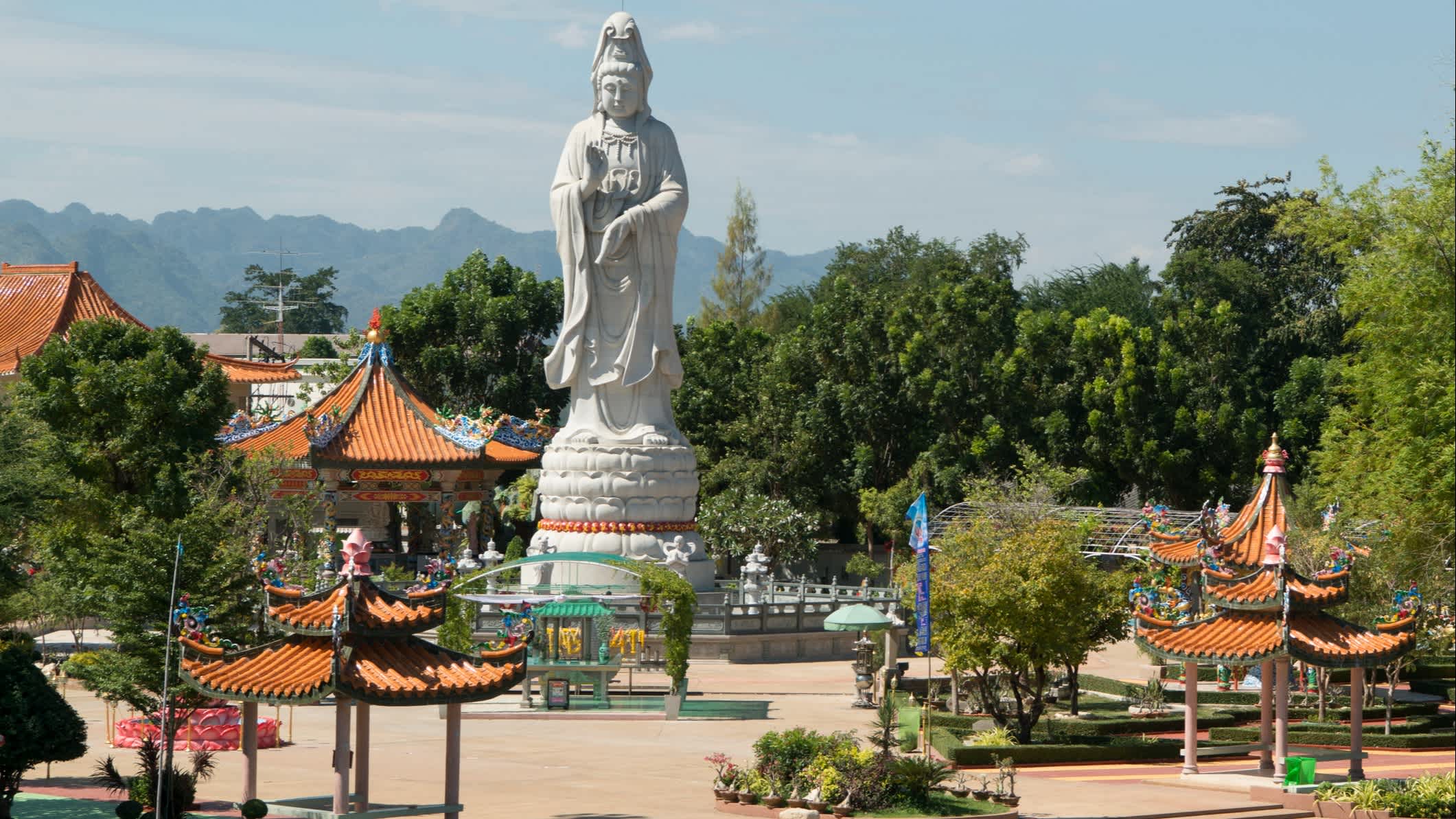
Kanchanaburi Tours
The top sights, highlights, tours & travel itinaries curated by our Travel Experts.
- Destinations
- Asia
- Thailand
- Kanchanaburi
Our Expert Tips for Your Kanchanaburi Tour
The town of Kanchanaburi, or Kan Buri for short, in western Thailand became world-famous through the 1957 classic film "The Bridge on the River Kwai", which impressively depicts the suffering of the prisoners of war who were used to build the railway bridge over the Khwae Yai during the Second World War. They are commemorated in the JEATH War Museum.
But Kanchanaburi, with its magnificent temples, vibrant nightlife and the natural beauty of Erawan National Park, is not only a worthwhile destination for history buffs. Less
![Asia Thailand Kanchanaburi Kwai Bridge Kanchanaburi Kwai Bridge]()
Kwai Bridge
One of the most historic bridges
![Asia Thailand Kanchanaburi Erawan Waterfall Kanchanaburi Erawan Waterfall]()
Erawan Waterfalls
An impressive natural beauty
What to See During Your Kanchanaburi Tour?
1. Bridge on the River Kwai
Kanchanaburi's most famous landmark is the railway bridge over the Khwae Yai River. It was built during World War II by the Japanese occupation forces, who used hundreds of thousands of prisoners of war and forced laborers to build it. Over 100,000 Asian and 16,000 Western workers were killed in the process. Thus the connection to Burma received the infamous name "Death Railway". The moving fate of the prisoners became internationally known through the novel "The Bridge on the River Kwai" by Pierre Boulle and the feature film of the same name by David Lean. After the black steel construction was severely damaged during the war, it was rebuilt true to the original in 1946. The two-hour ride on the "Death Railway" to neighbouring Nam Tok takes you through varied landscapes full of green rice fields and steep hill ranges. In Nam Tok, take a trip to the nearby Hellfire Pass Memorial Museum for an even deeper dive into history.
2. JEATH War Museum
The JEATH War Museum in Kanchanaburi commemorates the countless deaths caused by the construction of the railway bridge over the Khwae Yai River. The museum is located about three kilometers south of the bridge within the temple complex of Wat Chai Chumphon. The name JEATH stands for the first letters of Japan, England, Australia/America, Thailand and Holland. Most of the forced laborers came from these countries. The museum displays three replicas of bamboo barracks where the prisoners were housed. Photographs, everyday objects and tools paint an impressive picture of the inhumane conditions under which the prisoners of war had to live and work. A historic railway train and artillery weapons from the Second World War are also on display. The military cemetery, where many of the POWs are buried, is not far from the museum. Here you can read touching epitaphs and pay a memorial tribute to the deceased.
3. Erawan Waterfalls
Erawan National Park is about 65km away, but definitely worth a visit on your Kanchanaburi holiday. The picturesque waterfalls spill over seven levels into natural pools that invite you to take a refreshing dip when temperatures are high. The pools are home to numerous fish that love to nibble the calluses off bathers' feet. Thus, a free spa treatment is included with a visit to the Erawan Waterfalls. The roughly three-kilometer hike up to the highest level takes you to breathtaking viewpoints that showcase the National Park's ravishing landscapes in all their beauty. Incidentally, the park and waterfall are named after a three-headed elephant, the mount of the Hindu god Indra. The Erawan Waterfalls are a popular destination, so there can sometimes be a real rush of visitors. But if you arrive early in the morning, you'll have the falls almost to yourself. Less
Other Places to Visit During Your Tour
TourlaneCare

